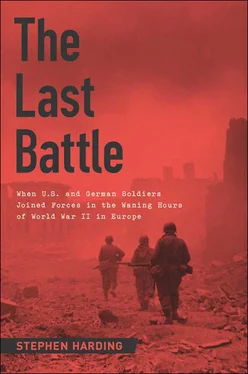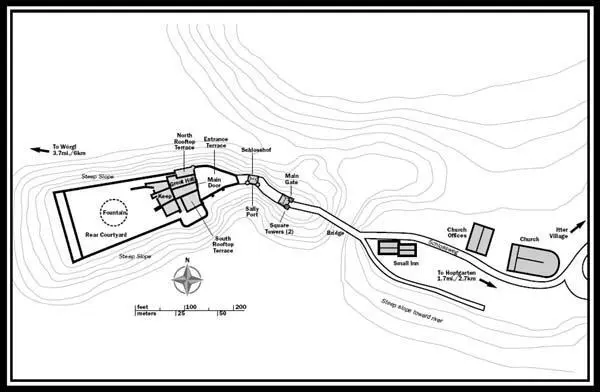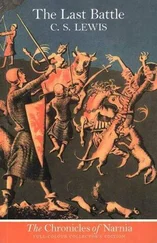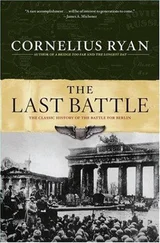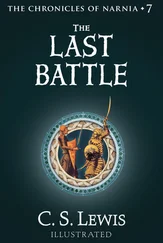Stephen Harding
THE LAST BATTLE

When U.S. And German Soldiers Joined Forces in the Waning Hours of World War II in Europe

As always, for Mari, with love
ON THE MORNING OF MAY 4, 1945, Captain John C. “Jack” Lee Jr. sat cross-legged atop the turret of his M4 Sherman tank, comparing the narrow streets before him with the terrain features marked on the map that lay partially open across his lap. Lee, a stocky twenty-seven-year-old from Norwich, New York, had spent the last five months leading Company B of the 23rd Tank Battalion—and, at times, much of the entire U.S. 12th Armored Division—on a headlong advance across France, into Germany, and now, in what would turn out to be the last days of World War II in Europe, into the Austrian Tyrol.
Lee’s tank was parked at the intersection of two streets in the town of Kufstein, Austria, three miles southwest of the German border on the south bank of the swift-flowing Inn River. All three of the 23rd’s tank companies had crossed the frontier the day before, leading the 12th Armored Division’s Combat Command R on its drive southward from the suburbs of Munich. Lee’s company had spearheaded the drive into Kufstein and had fought its way through a well-defended German roadblock before quickly clearing the town of its few defenders. Now, with the situation stabilized and lead elements of the 36th Infantry Division moving in to assume responsibility for the area, Lee and his men could catch a few minutes’ rest.
–———–
JUST A FEW MILES TO THE SOUTHWEST another tired officer was also scanning a map, trying to determine what the coming hours would hold for him and his men. Josef “Sepp” Gangl, a decorated Bavarian-born major in the German Wehrmacht, knew that the American juggernaut was rolling his way and that its arrival would likely be heralded by thunderous artillery barrages, the roar of tank fire, and the rattle of automatic weapons.
Gangl was not unduly troubled by the possibility of his own death; he’d come to grips with his own mortality fighting the Russians on the Eastern Front and the Allies in Normandy. He was concerned about the men he led, however, for not all were soldiers, and many weren’t even German. A few days earlier, knowing the war was lost and loath to spend any more lives defending a system he’d long before stopped believing in, Gangl had declared his own personal armistice and joined forces with the Austrian anti-Nazi resistance. His only goal now was to keep the advancing Americans—and, for that matter, any German units still loyal to the führer and the Reich—from butchering the men who’d chosen to follow him.
–———–
ATOP A ROCKY PROMONTORY overlooking the flatlands over which the Americans would soon advance, a gaggle of argumentative Frenchmen were also pondering what fate had in store for them. Peering over the battlements of a castle that had stood atop its mountain for centuries, and that had been their prison until that very morning, the men knew their newfound freedom was no protection against the wrath of die-hard SS units still roaming the thick forest around them. They needed deliverance, and they needed it soon. If help did not come before the sun set, they would almost certainly die within the walls of their Tyrolean fortress.
–———–
THE WARMTH OF THE SPRING SUN and Jack Lee’s exhaustion made it difficult for him to focus on the map. He was profoundly tired and hoped, more fervently than he let on to his men, that Kufstein would be Company B’s last battle. Like virtually every other soldier in the European theater of operations, Lee knew that the war could end at any moment—Adolf Hitler had killed himself five days earlier, and organized German opposition was crumbling—and, while the young officer would in some ways hate to see the conflict come to a close, he didn’t want any of his men to be the last American killed in Europe.
As Lee pondered what the war’s end would mean to him and his fellow tankers, events were unfolding literally just down the road that would shatter his men’s dreams of peace. Though he didn’t yet know it, Lee was about to be thrust into an unlikely battle involving the alpine castle whose icon was obscured by a fold in his map, a group of combative French VIPs, an uneasy alliance with the enemy, a fight to the death against overwhelming odds, and the last—and arguably the strangest—ground combat action of World War II in Europe.
CHAPTER 1
A MOUNTAIN STRONGHOLD
THE CASTLE THAT WAS SOON to figure so largely in Jack Lee’s life lay fourteen road miles to the southwest of where the young officer sat perched atop his tank. Schloss Itter, as it’s called in German, sits on a hill that commands the entrance to Austria’s Brixental valley. The structure bestrides a ravine, with a short bridge linking the castle to the flank of the mountain. The village of Itter spreads out to the east from the castle, some 2,300 feet above sea level and nestled beneath Hohe Salve, the 6,000-foot mountain in the middle alpine region historically known as Tyrol.
Though it would be of little concern to Lee and his men in the coming hours, Castle Itter already had a long, rich, and often violent history. The surrounding area had been inhabited at least since the middle Bronze Age (1800 to 1300 BCE), and the fact that the valleys of the Inn and Brixental Rivers provide a fairly flat and direct route between Central Europe and the Italian peninsula ensured that Tyrol saw more than its share of conflict. Conquered by Rome in 15 BCE, the region was successively invaded by the Ostrogoths, various German tribes, and Charlemagne’s Franks. In the ninth century CE Tyrol came under the sway of the Bavarians, who built two sturdy stone keeps and a surrounding wall atop the hill that would later be home to Schloss Itter, and in 902 a Count Radolt passed ownership of the fortified site to the Roman Catholic diocese of Regensburg. [1] Some sources date the earliest parts of the castle to 902. Most of the information regarding Schloss Itter’s early history is drawn from “Die Geschichte von Itter,” a pamphlet produced by Austria’s Hohe-Salve Regional Tourist Board, and Castle Hotels of Europe , by Robert P. Long.
Seeking to better protect his expanding Tyrolean possessions—and, of course, better enforce the collection of diocesan taxes—Regensburg’s Bishop Totu [2] Reigned 893–930.
ordered that the keeps and wall be replaced by a more substantial fortress. Construction of the full-fledged castle was a leisurely and often-interrupted process, however, and took more than a century to complete. In 1239 Rapoto III of Ortenburg, Bavaria’s count palatine, [3] A palatinate was a territory administered on behalf of a king or emperor by a count. In the Holy Roman Empire, a count palatinate was known in German as a pfalzgraf .
seized the fortress as a result of his vicious feud with the then current bishop of Regensburg, Siegfried. The latter captured Rapoto in 1240, and, in order to win his freedom, the defeated nobleman was forced to cede many of his properties in Bavaria and Tyrol to the Regensburg bishopric. Among the properties passed to Siegfried were the castle at Itter and the village that had grown just outside its walls; the names of both fortress and village first appear in the historical record in 1241. [4] Initially a collection of small huts and workshops used by the craftsmen who built the castle, the village of Itter evolved into a community built around the staffing and maintenance of the fortress. In return for their labor, the villagers were offered protection within the schloss in times of civil strife.
Читать дальше
